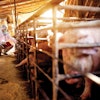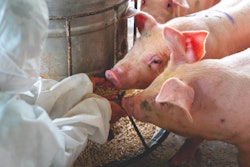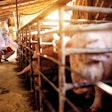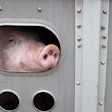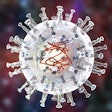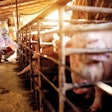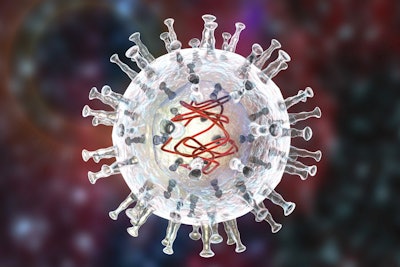
2 feed additives may reduce contagion of ASF, but details of use require further research
Recent research suggests not one, but two, types of feed additives may be effective at preventing African swine fever (ASF) from spreading in animal feed, but the additives may work better in some ingredients than others.
Formaldehyde and medium-chain fatty acids apparently reduce the ability of the ASF virus to infect swine, though the formaldehyde-based additive was effective in lower quantities than the fatty acids.
In a series of experiments at Kansas State University, researchers added ASF virus to 36 different feeds or feed ingredients. They then added either the formaldehyde additive or the medium-chain fatty acid and, in some cases, waited several weeks to simulate the effects of treating feed ingredients prior to their trans-Atlantic shipment.
The virus remained present in all feed ingredients tested. However, when the virus was extracted from the feed and injected into healthy pigs, only one of the pigs tested became ill with ASF.
Megan Niederwerder, a Kansas State pathobiologist and the lead researcher on the paper, said the pig in question had received two injections. One of the injections was virus extracted from dry dog food; the other injections’ virus had been mixed into organic soybean meal. The dry dog food and organic soybean meal were treated with medium-chain fatty acid.
“We don’t know if it was one or both” of the samples that caused the pig to fall ill, Niederwerder said. But the result suggests a possible limit to feed additives’ ability to prevent the spread of ASF in animal feed.
More research needed
Previous research by Niederwerder and her colleagues has noted that ASF remains contagious in organic soybean meal longer than in other feed ingredients. It is still not clear why, Niederwerder said.
“We’re still thinking about that, and understanding why soybean meal tends to be one of the ingredients that promotes or stabilizes these viruses,” she said. “Our last few research projects, organic soybean meal seems to have a component that increases the stability of the virus.”
It’s not clear why the two additives prevent ASF from infecting swine, but Niederwerder said researchers have some theories. Formaldehyde, she said, is thought to interfere with the virus’ DNA, while the fatty acids alter the “envelope” that forms the exterior of the virus, preventing it from binding to cells and causing infection.
If this is the case, the additives’ anti-viral properties may apply to diseases beyond ASF. However, Niederwerder cautioned that she was not aware of specific studies on other viruses in circulation such as the novel coronavirus (COVID-19).
Niederwerder said animal producers and veterinarians can consider these two additives a “tool in the tool box” for mitigating the risk of ASF. However, she cautioned that other factors must also be considered, including cost and the additives’ potential effect on the animals’ performance. She recommended working with a veterinarian or nutritionist to weigh the pros and cons alongside the potential risk associated with different feed ingredients, holding times, and the country of origin for imported feed ingredients.
“If you are importing multiple feed ingredients, and maybe particularly these ingredients that have repeatedly shown a risk factor, that’s when I would encourage producers and veterinarians to consider holding times or potentially a feed additive to mitigate the risk of the virus being introduced through feed ingredients,” she said.
